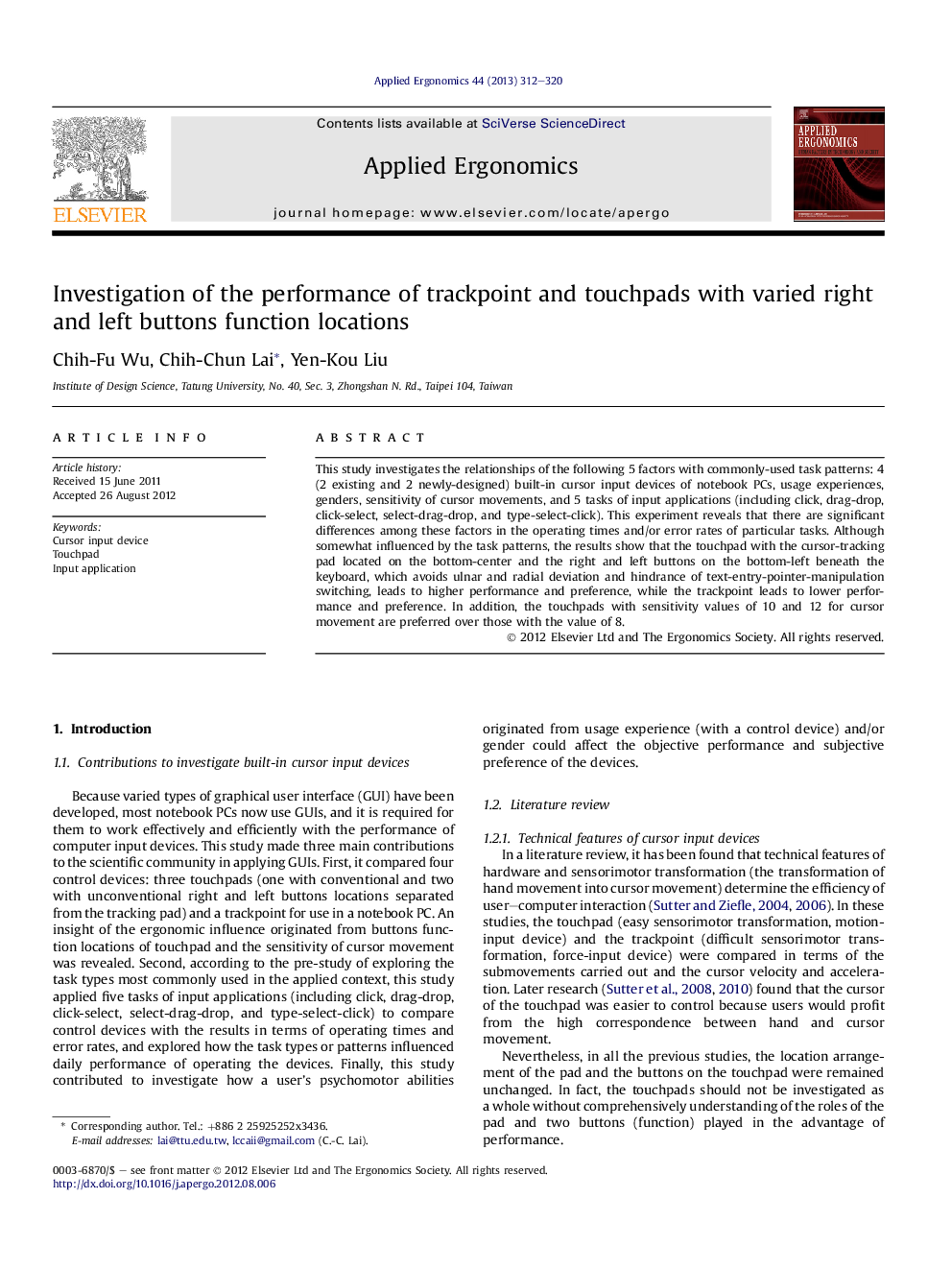| کد مقاله | کد نشریه | سال انتشار | مقاله انگلیسی | نسخه تمام متن |
|---|---|---|---|---|
| 548727 | 872262 | 2013 | 9 صفحه PDF | دانلود رایگان |

This study investigates the relationships of the following 5 factors with commonly-used task patterns: 4 (2 existing and 2 newly-designed) built-in cursor input devices of notebook PCs, usage experiences, genders, sensitivity of cursor movements, and 5 tasks of input applications (including click, drag-drop, click-select, select-drag-drop, and type-select-click). This experiment reveals that there are significant differences among these factors in the operating times and/or error rates of particular tasks. Although somewhat influenced by the task patterns, the results show that the touchpad with the cursor-tracking pad located on the bottom-center and the right and left buttons on the bottom-left beneath the keyboard, which avoids ulnar and radial deviation and hindrance of text-entry-pointer-manipulation switching, leads to higher performance and preference, while the trackpoint leads to lower performance and preference. In addition, the touchpads with sensitivity values of 10 and 12 for cursor movement are preferred over those with the value of 8.
► Touchpads with different right and left buttons locations outperformed a trackpoint.
► Usage experiences and genders have a specific task-related impact on performance.
► DS: An ergonomic touchpad arrays with the pad and the buttons beneath the keyboard.
► Users irrespective of expertise/gender learned fast to use DS in an applied context.
► Touchpad with a value of 12 for cursor movement sensitivity outperformed that of 10/8.
Journal: Applied Ergonomics - Volume 44, Issue 2, March 2013, Pages 312–320